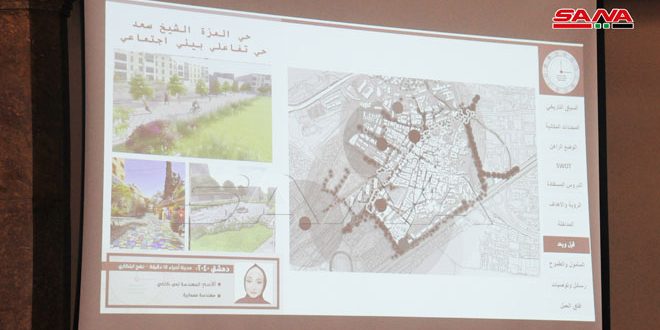Students of the Regional Planning Institute present modern visions for the neighborhoods of Damascus in 2040
Damascus (ST): Students of the Higher Institute of Regional Planning at the University of Damascus presented innovative modern visions for a number of neighborhoods in the city of Damascus in 2040 during a six-month workshop in cooperation with the Department of Architecture and Planning at the British University of Dundee.
The innovative visions presented by the students depended on the study and analysis of the current reality of a number of Damascene neighborhoods to find appropriate solutions to the problems related to the random distribution of building blocks, green and open spaces, and transportation problems in order to reach vital residential neighborhoods that meet the requirements of society and development, which will reflect positively on the lives and livelihoods of individuals.
Dr. Muhammad Yasar Abdeen, President of Damascus University, stressed in a speech the importance of proper urban planning by relying on planning studies in accordance with a clear scientific methodology so that the cities would be in a way that befits modern life, pointing out that the Higher Institute of Regional Planning at the University of Damascus has taken upon itself, since its establishment, the responsibility of preparing, qualifying and training national cadres in the field of regional planning with the aim of localizing knowledge, methodologies and planning schools to serve the sustainable development process in Syria.
In turn, Dr. Rida Deeb, Dean of the Higher Institute of Regional Planning, indicated in a statement that the planning problem in Damascus is “big,” noting at the same time that all countries of the world have started at the current stage to take new policies and planning approaches, especially after the Coronavirus pandemic, which imposed the application of certain restrictions.
In his speech via the Internet, Dr. Hussam Al-Waer, Director of the Urban Planning Program at the University of Dundee, stated that the former neighborhoods of Damascus were better “socially and environmentally” and their dwellings were far apart, but the urban agglomerations and accumulations and the increase in urban complexities negatively affected green and interactive spaces
K.Q.

